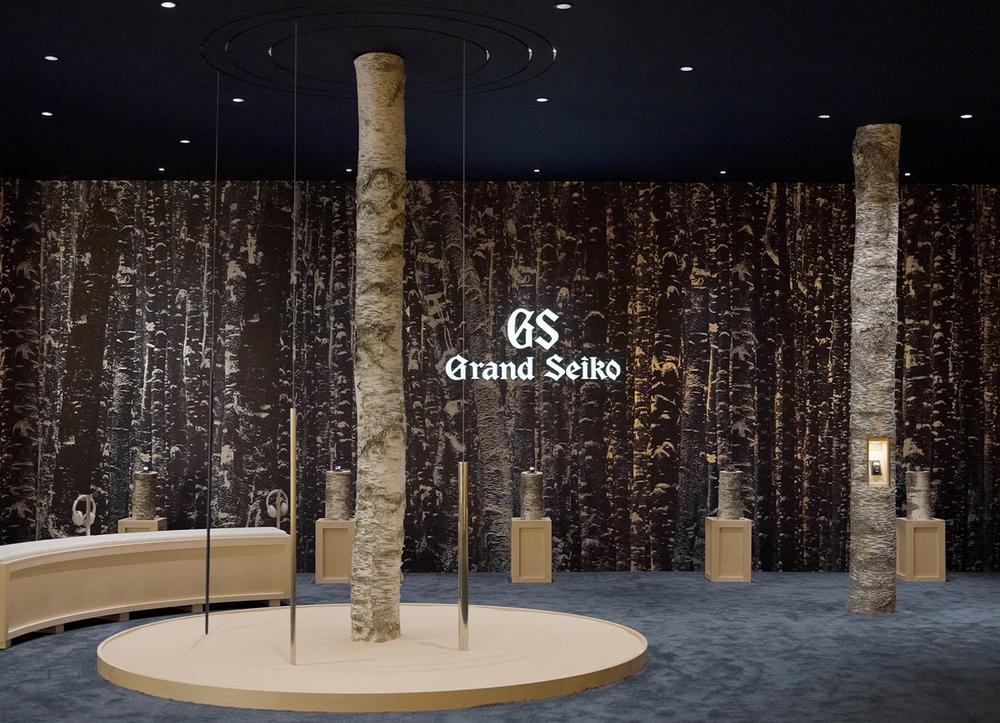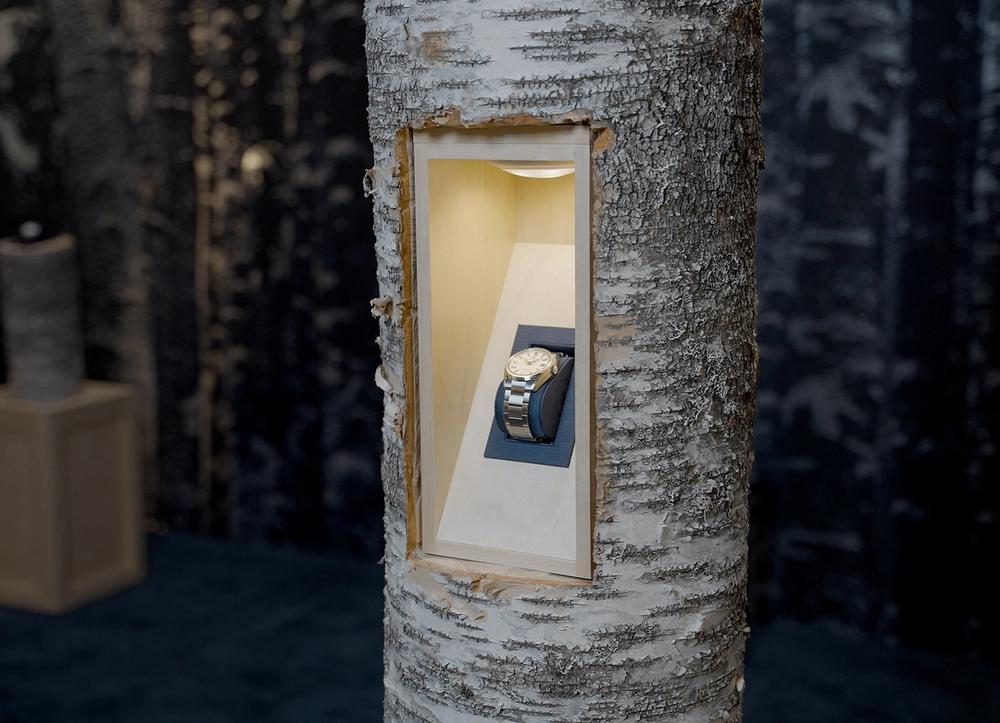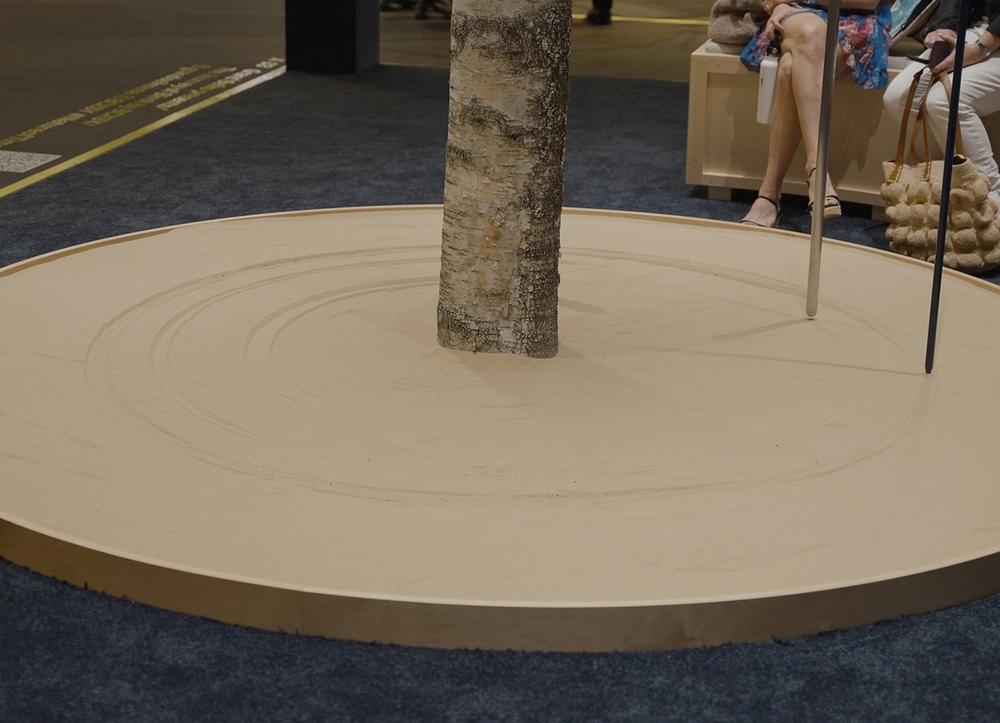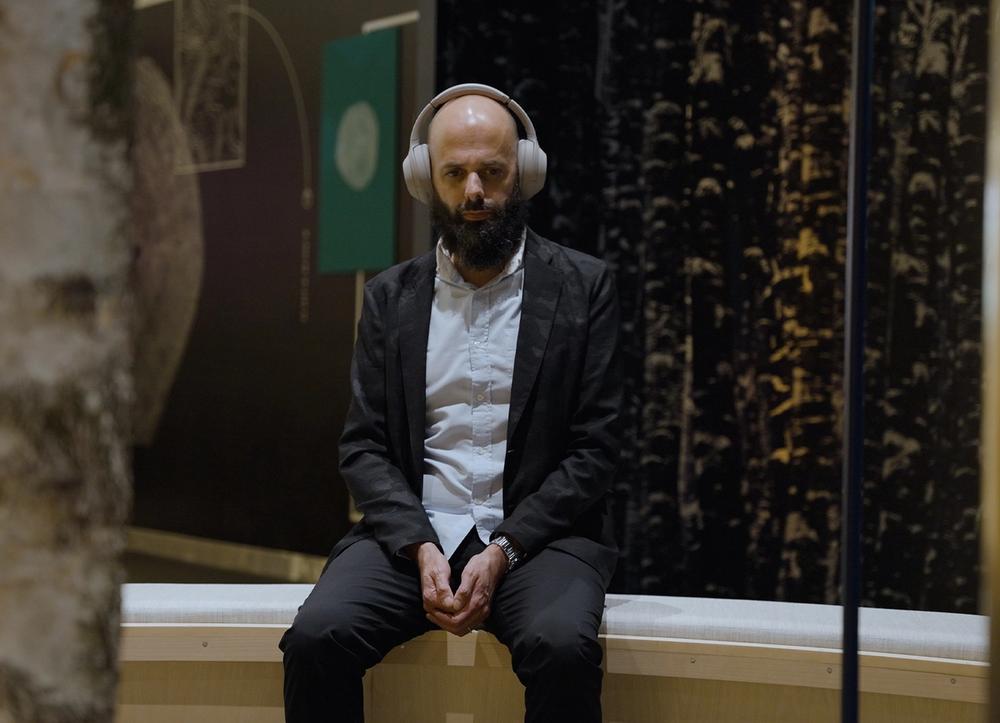In Miami, an Amsterdam Studio Builds a Pared-Down Portal to Japan’s Serene Birch Forests
Marked by a snow-white dial with a texture evocative of tree bark, the SLGH005 timepiece from the Japanese watchmaker Grand Seiko was informed by the shirakaba (white birch trees) that thrive in Japan’s northern region, particularly those near the company’s studio in Shizukuishi, where the accessory is made. Released earlier this year as part of Grand Seiko’s Heritage Collection, the “White Birch” watch elegantly symbolizes the deep connections between nature and time—elements that feature in every timepiece the company creates—and serves as a fitting muse for a multisensory installation that Grand Seiko will debut this week at the Design Miami collectible design fair.
Titled “The Journey of Birch” (on view Dec. 1–5), the immersive experience was designed by BCXSY, an Amsterdam-based creative practice that was founded in 2007 by designers Boaz Cohen and Sayaka Yamamoto. BCXSY’s work often exists at the intersection of craft, history, and the natural world, as is apparent in past projects including a series of furniture that celebrates the tiny fossils embedded in Vicenza stone, and a collection of fruit-shaped ceramic vases informed by plants that Cohen and Yamamoto observed at the National Palace Museum in Taipei.
For the Grand Seiko installation, BCXSY devised an alluring, abstract representation of a birch forest. A custom indigo-colored wallpaper woven with shimmering metallic fibers lines the space’s interior, creating an ethereal atmosphere. Toward the center of the room, three different-sized metal rods—representing hours, minutes, and seconds, respectively—extend from the ceiling into a ring of sand on the floor and mimic the colors seen on the “White Birch” watch dial. The mechanized rods slowly revolve around a central birch trunk, creating circles in the sand that mark the passing of time. Placed throughout the booth are benches that resemble wooden shipping crates, a reference to movement and travel. Each is equipped with headphones that transmit the meditative sounds of the rods moving through the sand.
We recently spoke with Cohen and Yamamoto to learn more about the ideas behind the installation, and about how it fits into their larger design practice.
How did you come up with the concept for the installation?
Boaz Cohen: We wanted to create a complete experience, something a bit like a dreamlike forest, inspired by the birch woods—particularly those found on the Hiraniwa Plateau [in Japan’s Iwate Prefecture] that Grand Seiko is helping to protect. That whole story really touched us. It’s beautiful to see a company that cares about nature and about the country that it’s from. So, to wrap the walls, we designed a wallpaper that provides an abstract yet recognizable representation of the birch woods. In the middle of the clock, there’s a white birch going from the sand pool to the ceiling.
As for the title, “The Journey of Birch,” we were initially hoping to get a birch tree to literally travel from Japan to Miami, which, for logistical reasons, couldn’t happen. Nevertheless, we wanted to suggest and illustrate the idea of movement, both in the obvious sense of a watch’s [hands moving] and in the sense of travel and transport. [You’ll see] benches that appear to be made from shipping crates. Elsewhere, there are crates topped with a section of a birch tree trunk.
We also wanted the installation to give people a moment of meditative [calm]. By putting on one of the headsets, you can really take a little break from the busy environment of the fair, and be with yourself and what is in front of you.
Sayaka Yamamoto: We want visitors to feel like they are surrounded by a big surrealistic forest. So you sit there, listen, and take time to see the time. You usually can’t see time or feel time—it’s not tactile—but here, you can use other [senses] to do so.
Are any formal aspects of the “White Birch” timepiece—such as its craftsmanship and technology—apparent in the space?
Cohen: This installation is our emotional interpretation of the watch. We didn’t take things too literally. That’s because the watch is, of course, perfect: Every smallest detail is extremely well thought out and well executed. The texture of its surface, for example—it’s amazing how something on that scale can contain so much detail and skill. We would never dare add to it. The only thing we could do to honor it was to express a related atmosphere.
How do you think about nature and time in your design work more broadly
Yamamoto: We love nature as nature, but also as a material to work with, [and often] use it literally as the material to produce a product.
Cohen: Nature and time are things we think a lot about and that we care a lot about. One thing that we like about nature is that it has a certain strangeness. There are so many things in nature that are kind of weird, like things you would look at and think, Who would have thought to make this in this way? And time, in a very different way, shares this strangeness. It’s one of those concepts that we as human beings have made lovely tools to measure, but there is still something very abstract about it. It’s one of the biggest topics that touch us as human beings, so it’s something which is very present in our work.
What do you want visitors to take away from the installation?
Cohen: I hope that through all of the elements we’ve created, we’ll trigger a certain curiosity. Our inspiration and our story [for this project] came from Grand Seiko, and I believe that if people appreciate the experience they get there, [it will lead them to] find a connection with the brand, and to learn more about what the company has to offer.
Yamamoto: Going back to our interpretation and our portrait of Grand Seiko, I hope that each person has a different [interpretation] of what they see in the booth, and has a different experience inside of it. So there’s not one absolute answer. If I interviewed one hundred visitors about their experience and received one hundred [different] answers, that would be fine for me. Because while they’re all seeing the same installation, I want them to see beyond the outlines we’ve prepared.




